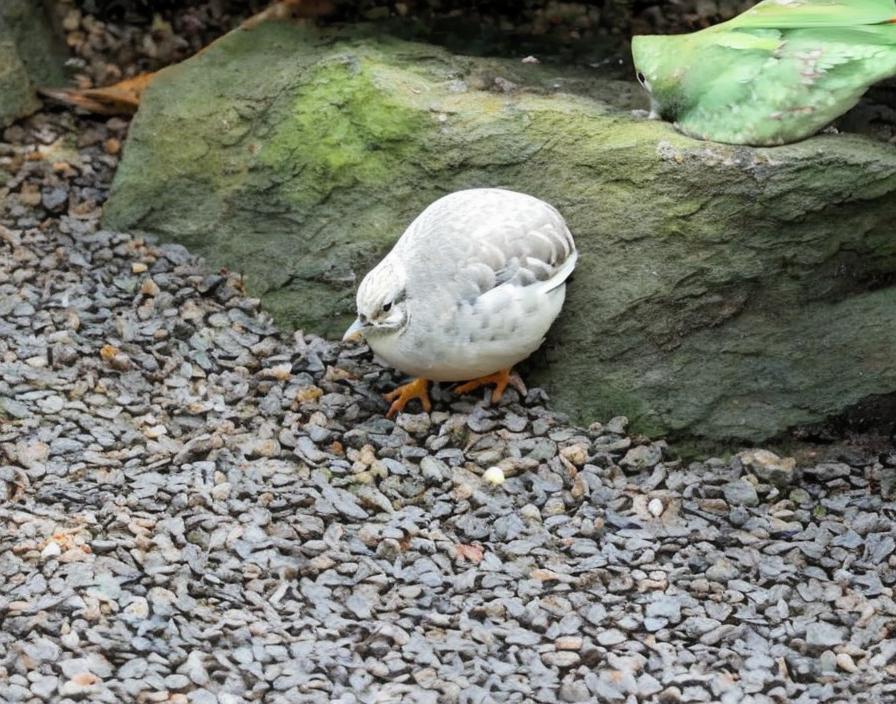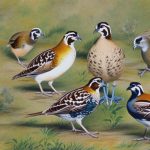Quails are small, ground-dwelling birds that belong to the pheasant family. There are several different breeds of quail, each with its own unique characteristics and traits. Some of the most popular quail breeds include the Coturnix quail, Bobwhite quail, Gambel’s quail, and California quail. Each breed has its own distinct coloration, size, and egg-laying capabilities. For example, the Coturnix quail is known for its prolific egg-laying abilities, while the Bobwhite quail is prized for its delicious meat. Understanding the differences between quail breeds is essential for anyone looking to mix different breeds together.
Quail breeds also vary in terms of their temperament and behavior. Some breeds may be more docile and easy to handle, while others may be more skittish and prone to flight. Additionally, certain quail breeds may have specific dietary or environmental requirements that need to be taken into consideration when mixing breeds. It’s important to research each breed thoroughly to understand their individual needs and characteristics before attempting to mix them together.
Key Takeaways
- There are several quail breeds, each with unique characteristics and traits that make them suitable for different purposes such as meat or egg production.
- Mixing quail breeds can result in hybrid vigor, which can lead to improved overall health and productivity in the flock.
- When mixing quail breeds, it’s important to consider factors such as size, temperament, and egg production to ensure compatibility and minimize potential conflicts.
- Potential challenges of mixing quail breeds include aggression, mating issues, and difficulty in maintaining breed purity for breeding purposes.
- To successfully mix quail breeds, provide adequate space, monitor for any signs of aggression, and carefully introduce new birds to the flock to minimize stress and conflict.
- Breeding mixed quail breeds can result in unique and desirable traits, but it’s important to carefully select breeding pairs to maintain the desired characteristics.
- In conclusion, mixing quail breeds can offer several advantages such as improved productivity and genetic diversity, but it’s important to carefully consider the compatibility and long-term breeding goals when mixing different breeds.
Benefits of Mixing Quail Breeds
Mixing different quail breeds can offer a range of benefits for quail keepers. One of the main advantages of mixing quail breeds is the potential for creating a more diverse and visually appealing flock. By combining different breeds, you can introduce a variety of colors, patterns, and sizes to your quail population, creating a more interesting and attractive aviary. Additionally, mixing quail breeds can also lead to increased genetic diversity within the flock, which can help to improve overall health and resilience.
Another benefit of mixing quail breeds is the potential for creating a more versatile and productive flock. By combining breeds with different strengths and characteristics, you can create a flock that excels in both egg production and meat quality. For example, you could cross a prolific egg-laying breed like the Coturnix quail with a larger, meatier breed like the Bobwhite quail to create a hybrid that offers the best of both worlds. This can be particularly advantageous for quail keepers who are looking to maximize the productivity of their flock.
Considerations When Mixing Quail Breeds
While there are many benefits to mixing quail breeds, there are also several important considerations to keep in mind. One of the most crucial factors to consider is compatibility between different breeds. Some quail breeds may have aggressive tendencies or territorial behaviors that could lead to conflicts when mixed with other breeds. It’s important to carefully observe the behavior of each breed and consider their compatibility before attempting to mix them together.
Another consideration when mixing quail breeds is the potential for hybrid vigor. When two different breeds are crossed, the resulting offspring may exhibit enhanced traits such as increased growth rate, disease resistance, or egg production. However, it’s important to note that not all hybrid crosses will result in improved performance, and some combinations may actually lead to undesirable traits or health issues. It’s essential to research the potential outcomes of specific breed crosses and carefully consider the genetic implications before mixing quail breeds.
Potential Challenges of Mixing Quail Breeds
Mixing different quail breeds can also present several potential challenges for quail keepers. One of the main challenges is managing the genetic diversity within the flock. While genetic diversity can be beneficial for overall health and resilience, it can also lead to increased variability in terms of size, coloration, and other traits. This can make it more difficult to maintain uniformity within the flock, which may be important for certain breeding or exhibition purposes.
Another potential challenge of mixing quail breeds is the risk of creating undesirable traits or genetic abnormalities. When two different breeds are crossed, there is always the potential for unexpected outcomes in terms of offspring characteristics. Some hybrid crosses may result in offspring with poor growth rates, reduced fertility, or other health issues. It’s important to carefully consider the potential risks and challenges associated with specific breed crosses before attempting to mix quail breeds.
Tips for Successfully Mixing Quail Breeds
To successfully mix different quail breeds, there are several important tips to keep in mind. Firstly, it’s essential to carefully research each breed and understand their individual characteristics, behaviors, and requirements. This will help you make informed decisions about which breeds are compatible and well-suited for mixing together. Additionally, it’s important to observe the behavior of each breed and monitor their interactions before introducing them into a mixed flock.
Another important tip for successfully mixing quail breeds is to start with small-scale trials before committing to larger breeding projects. By starting with a small number of birds from different breeds, you can observe how they interact and assess the potential outcomes of specific breed crosses. This can help you identify any potential challenges or issues before expanding your mixed flock.
Breeding Mixed Quail Breeds

Breeding mixed quail breeds can be a rewarding endeavor, but it’s important to approach it with careful planning and consideration. When breeding mixed quail breeds, it’s essential to have a clear understanding of the genetic implications and potential outcomes of specific breed crosses. This will help you make informed decisions about which crosses are likely to produce desirable traits and which ones may lead to undesirable outcomes.
Additionally, it’s important to carefully manage the breeding process to ensure that genetic diversity is maintained within the flock. This may involve rotating breeding pairs or introducing new bloodlines periodically to prevent inbreeding and maintain overall health and vigor within the flock. It’s also important to keep detailed records of breeding outcomes and offspring characteristics to track the performance of specific breed crosses over time.
The Advantages of Mixing Quail Breeds
In conclusion, mixing different quail breeds can offer a range of benefits for quail keepers, including increased genetic diversity, improved productivity, and a more visually appealing flock. However, it’s important to carefully consider the compatibility between different breeds and the potential challenges associated with mixing quail breeds. By researching each breed thoroughly, observing their behavior, and starting with small-scale trials, quail keepers can increase their chances of successfully mixing different breeds together.
When breeding mixed quail breeds, it’s essential to have a clear understanding of the genetic implications and carefully manage the breeding process to maintain genetic diversity within the flock. With careful planning and consideration, mixing quail breeds can be a rewarding way to create a diverse and productive flock that excels in both egg production and meat quality.
Certainly! Here’s the paragraph with the related article included as an tag:
If you’re interested in raising quail, you might also want to explore the possibilities of mixing different breeds of quail. Understanding the compatibility and potential benefits of crossbreeding can be a fascinating aspect of quail husbandry. For more insights into the world of poultry breeding, check out this informative article on transforming a shed into a chicken coop.
FAQs
What are the different breeds of quail?
There are several different breeds of quail, including the Coturnix quail (also known as Japanese quail), Bobwhite quail, Gambel’s quail, California quail, and many others.
Can you mix different breeds of quail?
Yes, you can mix different breeds of quail. However, it’s important to consider the potential for hybridization and the specific needs and behaviors of each breed when mixing them.
What are the considerations when mixing different breeds of quail?
When mixing different breeds of quail, it’s important to consider the potential for hybridization, the space and housing requirements for each breed, their dietary needs, and their compatibility in terms of behavior and temperament.
What are the potential risks of mixing different breeds of quail?
The potential risks of mixing different breeds of quail include hybridization, which can result in offspring with unpredictable traits, as well as potential aggression or competition between different breeds.
How can you successfully mix different breeds of quail?
To successfully mix different breeds of quail, it’s important to provide adequate space and housing, monitor the behavior and interactions of the different breeds, and ensure that their dietary and environmental needs are being met. It’s also important to be prepared to separate the quail if any issues arise.
Meet Walter, the feathered-friend fanatic of Florida! Nestled in the sunshine state, Walter struts through life with his feathered companions, clucking his way to happiness. With a coop that’s fancier than a five-star hotel, he’s the Don Juan of the chicken world. When he’s not teaching his hens to do the cha-cha, you’ll find him in a heated debate with his prized rooster, Sir Clucks-a-Lot. Walter’s poultry passion is no yolk; he’s the sunny-side-up guy you never knew you needed in your flock of friends!







